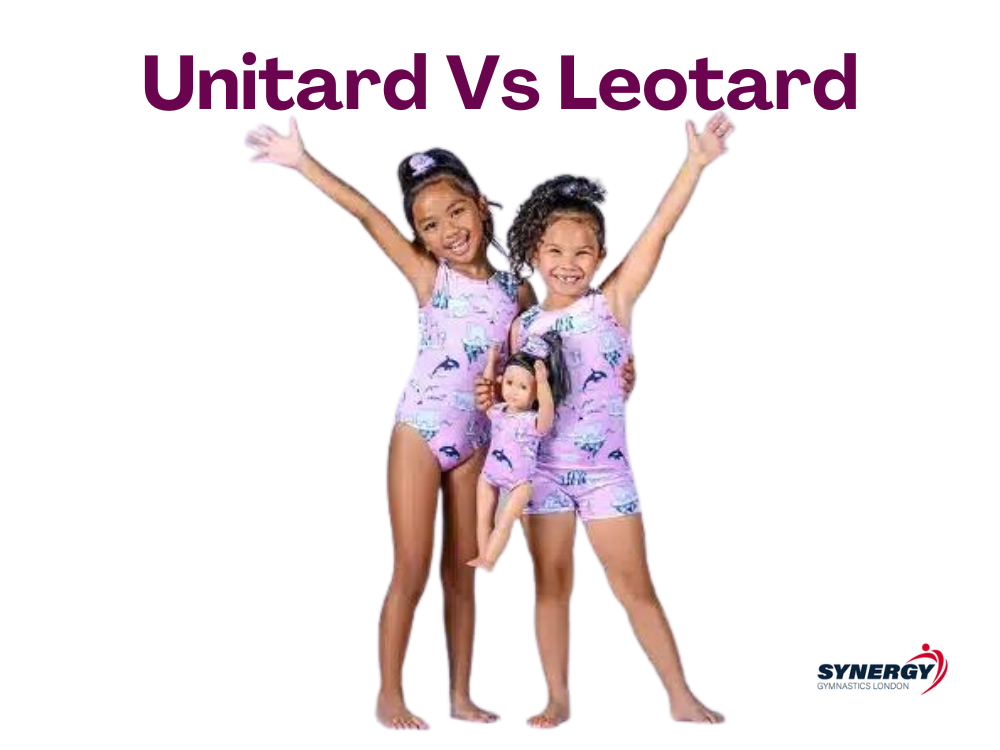
When it comes to gymnastics, dance, or any athletic activity that requires flexibility and movement, having the right clothing is essential. In Gymnastics the main options fall between a Unitard vs Leotard. In this article, we’ll take a closer look at each of these garments, their differences, as well as their benefits and we’ll also include Biketards which are very similar to Unitards.
At a glance
Check out our quick reference table to spot the differences and similarities between a leotard, unitard and biketard.
| Leotard | Unitard | Biketard | |
| Torso Coverage | Complete | Complete | Complete |
| Sleeve Type(s) | Long or Short | Long or Short | Short |
| Leg Coverage | None | Usually to ankles | Usually to mid-thigh |
| Practice or competition wear? | Both | Practice | Practice |
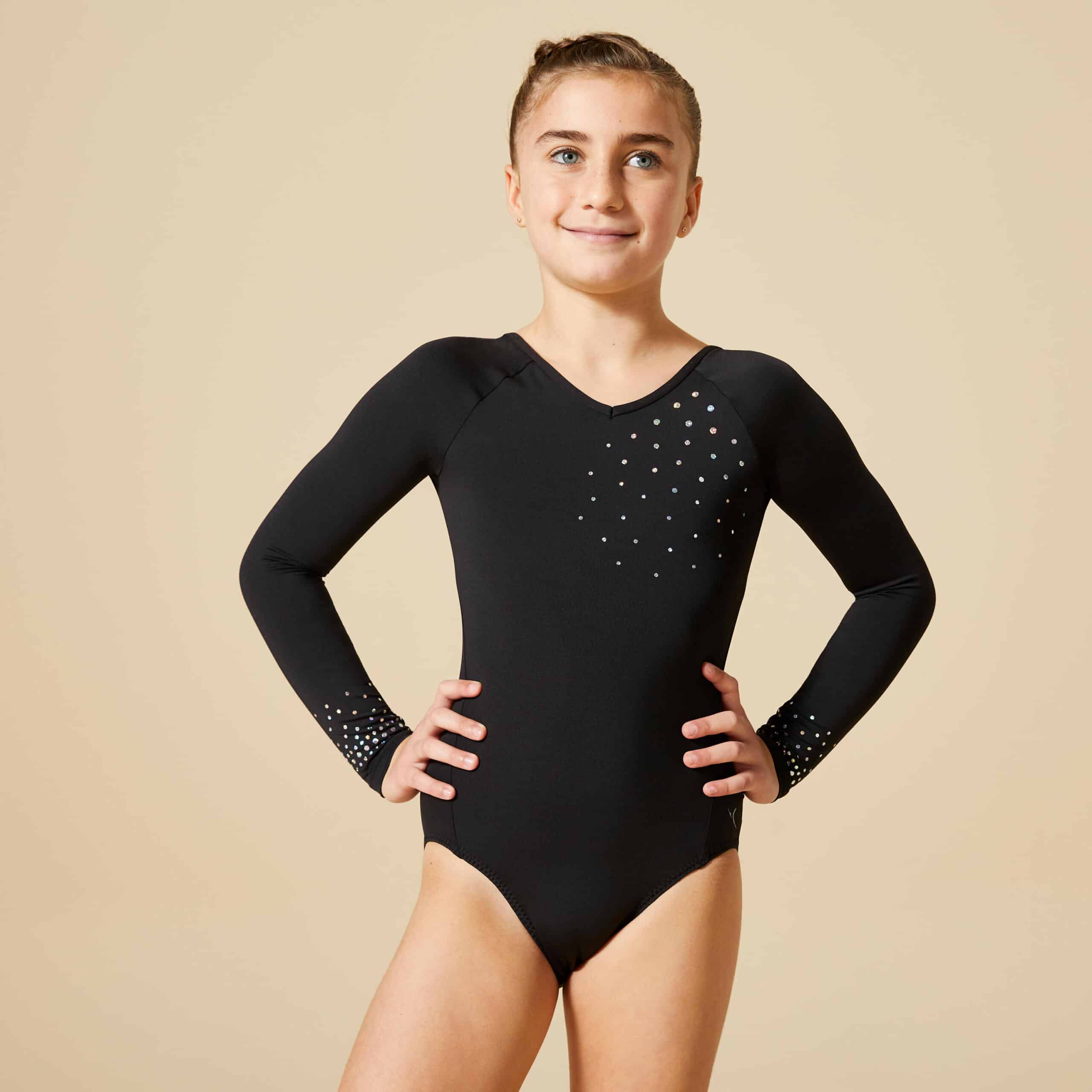 |  | 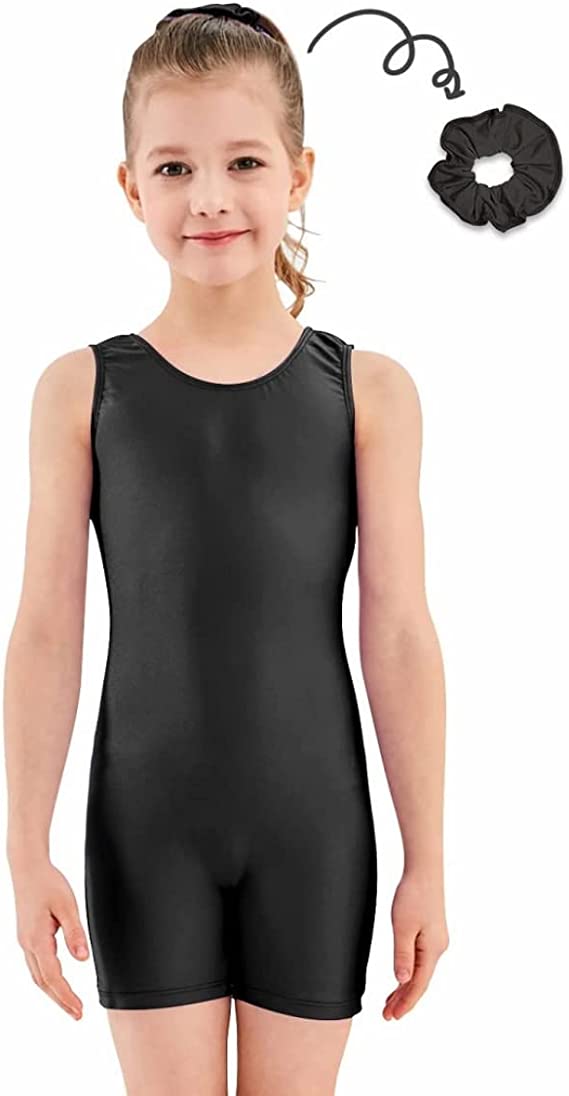 |
Before we get into this, I should point out that the term Unitard and Biketard are used interchangeably by some brands which makes it a little trickier! And on that note, Unitards are also called bodysuits by some people. Each is designed with the same purpose in mind: to give a maximum range of motion and comfort when performing gymnastics, dance and other similar sports.
Read to the end of the article for a full list of differences and similarities.
What is a Unitard?
A unitard is a one-piece garment that covers the entire body, including the arms and legs. It’s similar to a leotard but provides more coverage. Unitards are typically made of spandex or lycra and come in a variety of styles, including tank, short-sleeved, and long-sleeved, and can have a high or low-cut leg.

Can You Wear a Unitard for Gymnastics?
Yes, unitards are a popular choice for gymnastics as they provide more coverage and protection than leotards while still allowing for a full range of motion. They are especially popular with younger gymnasts at practice. They are not normally worn at gymnastics competitions.
Benefits and Drawbacks
One of the main benefits of unitards is the additional coverage and protection they provide compared to leotards. They can also be more comfortable for some people as they provide full-body coverage. However, they are less traditional than leotards and it’s unusual to a see a unitard worn by Artistic gymnasts especially at competitions.
In addition, some coaches may insist on their gymnasts wearing a leotard as a unitard can make it harder for the coach to physically support and spot their gymnast.
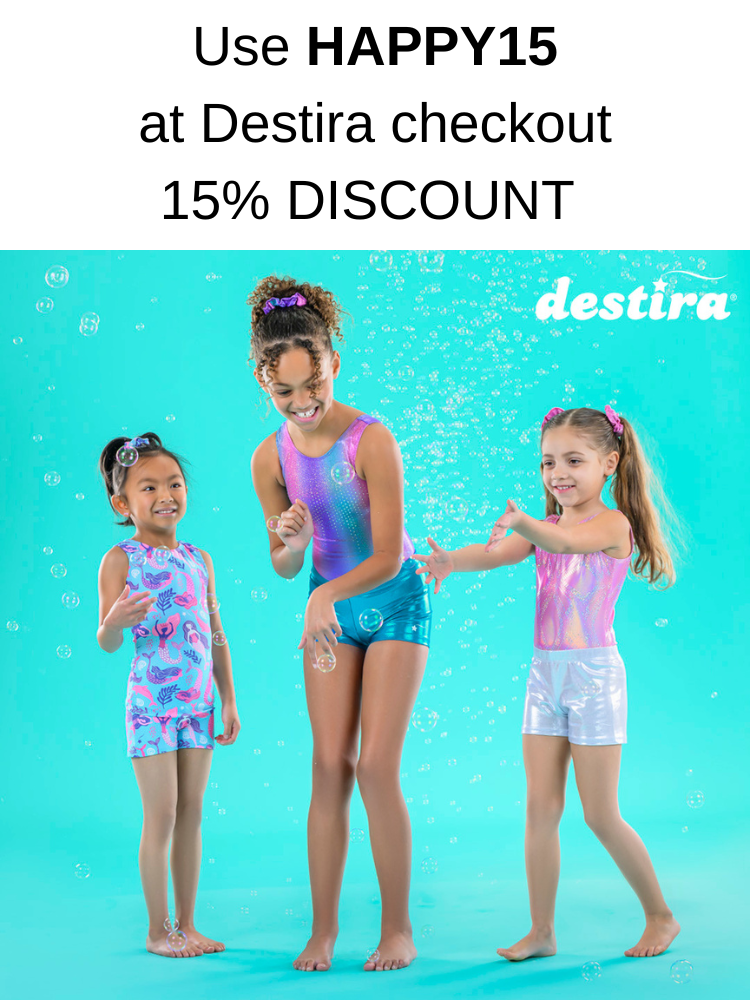
What is a Leotard?
A leotard is a one-piece garment that covers the torso but leaves the arms and legs exposed, though long-sleeved leotards are increasingly popular nowadays. It’s named after the French acrobat Jules Leotard, who first popularized the garment in the late 1800s.
Originally made of wool, leotards are now commonly made of spandex or lycra, which allows for greater flexibility and movement. They come in a variety of styles, including tank, short-sleeved, and long-sleeved, and can have a high or low-cut leg.
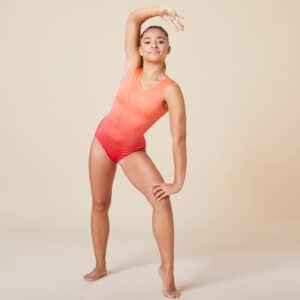
Can You Wear Leotards for Gymnastics?
Yes, leotards are a popular choice for gymnastics due to their flexibility and range of motion. They allow athletes to move freely without restriction, which is essential for executing complex skills.
Male gymnasts always wear shorts with a leotard but for females, shorts are optional. The best leotards for girls will be tight fitting yet still allow for a full range of motion.
Benefits and Drawbacks
One of the main benefits of leotards is their flexibility, which allows for a greater range of motion. They’re also easy to move in and don’t ride up or shift during activity. However, they can be revealing, and some people may feel self-conscious wearing them. Additionally, they don’t provide as much coverage or protection as other garments, which may be a concern for some athletes.
Key Differences Unitard vs Leotard
- Coverage:
- Unitard: Provides full-body coverage, extending to the legs and sometimes even to the wrists. This offers additional warmth and protection, making it ideal for training in cooler environments or for athletes who prefer more coverage.
- Leotard: Typically covers just the torso, with options for sleeveless, short sleeves, or long sleeves. It allows for greater freedom of movement, especially in the legs, which some gymnasts find enhances their performance.
- Style and Design:
- Unitard: Often seen as more conservative due to its extensive coverage. It can be designed in various lengths, from full-length to three-quarter length, and can include different sleeve lengths.
- Leotard: Offers a wide range of styles, from minimalistic to highly decorative, with various necklines, back designs, and embellishments. This makes it a popular choice for competition, where aesthetics and individuality can make a difference.
- Functionality:
- Unitard: Provides additional support and can help with muscle compression, which might benefit gymnasts during long training sessions. It’s also less likely to shift during routines, offering a consistent fit.
- Leotard: Allows for maximum mobility and is often preferred for its lightweight feel. It’s easier to layer with other clothing, such as tights or leggings, for added versatility.
Key Similarities Unitard vs Leotard
- Material:
- Both unitards and leotards are typically made from stretchy, breathable fabrics like Lycra, spandex, or polyester blends. These materials provide the necessary flexibility and durability required for rigorous gymnastics routines.
- Fit and Comfort:
- Both garments are designed to fit snugly to the body, ensuring that they move with the gymnast without restricting movement. Comfort is a priority in both cases, allowing gymnasts to focus on their performance.
- Purpose:
- Both unitards and leotards are designed to enhance a gymnast’s performance by providing appropriate support, flexibility, and freedom of movement. They are essential components of a gymnast’s wardrobe, each serving specific purposes depending on the training or competition needs.
What is a Biketard?
A biketard is a one-piece garment that covers the torso, arms, and legs, similar to a unitard, but with shorts instead of full-length legs. Biketards are often worn for cycling or bike racing (hence the name), but can also be worn for other athletic activities like gymnastics.
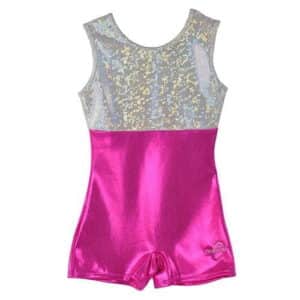
Can You Wear Biketards for Gymnastics?
Yes, biketards are a popular choice for gymnastics as they provide more coverage and protection than leotards, but with the added benefit of shorts instead of full-length legs, which can be more comfortable and less restrictive. Biketards are similar to Unitards in that they are common at gymnastics practice but are not usually worn at competitions.
Benefits and Drawbacks
One of the main benefits of biketards is the additional coverage and protection they provide compared to leotards, while still allowing for a full range of motion. The shorts also provide more coverage and can be more comfortable than full-length legs. However, biketards may not be as flexible as leotards or unitards, which may be a drawback for some athletes. Additionally, biketards may not be as widely available as leotards or unitards, making it more difficult to find the right fit and style.
Best Brands of Gymnastics Clothing
Many of the big leotard brands also sell Unitards and Biketards (though some refer to Biketards as Unitards). Big brands include:
Check out this definitive list of leotard brands for more trusted places to purchase gymnastics clothing.
Conclusion
In conclusion, choosing between a unitard vs a leotard ultimately depends on personal preference, the specific demands of the coach, and the level at which the gymnast is training. By understanding the distinct features and benefits of each, gymnasts can select the attire that best supports their training and goals, ensuring they feel comfortable and confident.
- The 12 Types of Trampoline Explained
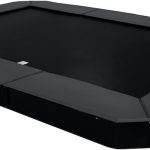 Trampolines aren’t just one-size-fits-all; they’re as varied as the people who bounce on them. From expansive models that invite a group experience to compact units… Read more: The 12 Types of Trampoline Explained
Trampolines aren’t just one-size-fits-all; they’re as varied as the people who bounce on them. From expansive models that invite a group experience to compact units… Read more: The 12 Types of Trampoline Explained - An In Ground Trampoline – Is It Worth It?
 Traditional above-ground trampolines often come with concerns about safety and aesthetics. Enter the in-ground trampoline – a modern twist on this classic play equipment that… Read more: An In Ground Trampoline – Is It Worth It?
Traditional above-ground trampolines often come with concerns about safety and aesthetics. Enter the in-ground trampoline – a modern twist on this classic play equipment that… Read more: An In Ground Trampoline – Is It Worth It? - The Best Trampoline For Gymnastics (2024)
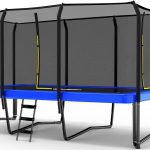 Discovering the best trampoline for gymnastics isn’t just about finding an outdoor trampoline; it’s about unlocking new training drills and skills. Trampolines are a fantastic way to… Read more: The Best Trampoline For Gymnastics (2024)
Discovering the best trampoline for gymnastics isn’t just about finding an outdoor trampoline; it’s about unlocking new training drills and skills. Trampolines are a fantastic way to… Read more: The Best Trampoline For Gymnastics (2024) - How To Choose A Trampoline (Full Guide)
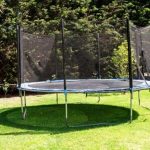 In this guide, we’ll bounce through the essentials of how to choose a trampoline, from size and shape to durability and bounce quality, ensuring you… Read more: How To Choose A Trampoline (Full Guide)
In this guide, we’ll bounce through the essentials of how to choose a trampoline, from size and shape to durability and bounce quality, ensuring you… Read more: How To Choose A Trampoline (Full Guide) - Unitard vs Leotard (What’s The Difference?)
 When it comes to gymnastics, dance, or any athletic activity that requires flexibility and movement, having the right clothing is essential. In Gymnastics the main… Read more: Unitard vs Leotard (What’s The Difference?)
When it comes to gymnastics, dance, or any athletic activity that requires flexibility and movement, having the right clothing is essential. In Gymnastics the main… Read more: Unitard vs Leotard (What’s The Difference?) - The Best Gymnastics Grips (Guide And Top Picks)
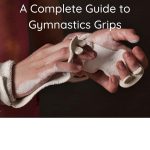 Finding the Best Gymnastics Grips can feel like navigating through a maze of endless options, but fear not, this comprehensive buyer’s guide is your beacon… Read more: The Best Gymnastics Grips (Guide And Top Picks)
Finding the Best Gymnastics Grips can feel like navigating through a maze of endless options, but fear not, this comprehensive buyer’s guide is your beacon… Read more: The Best Gymnastics Grips (Guide And Top Picks)
